Looking for link building plan ideas in 2024? This article discusses everything you need to know — from top tactics for relevant links to templates you can follow. Check it out.
What Should Be On Your Link Building Plan in 2024?
A successful link building strategy should answer all the 7 WH questions — what, when, where, who, whom, which, whose, why, and how you will get backlinks.
All these questions can be condensed into 5 points like below:
- Your presentation — branding
- Delegation of tasks and duties
- Types of links to include in your link building strategy
- Link building tactics to use
- Cost considerations and budgeting
Branding
Put simply, your presentation matters. If your content game is lit, your website should look the part. Otherwise, others will think twice about working with you.
But what if your website feels and looks top-notch? Should you change what works all in the name of branding?
In that case, answer these questions:
- Is the top-notch design only on your homepage?
- Is your bounce rate high?
- Are you using a contrasting color palette?
- Can your website be more responsive?
If you answer yes, revisit your overall branding — color, logos, backend, and front-end.
Bottom line:
Your website should be simple and safe. Visitors should be able to navigate through your blog posts and pages seamlessly.
Delegation of Tasks and Duties
Once you get the branding right, communicate the values and proposed feelings to your team. And that’s not all.
Team members should know their roles and duties in your plan.
For example, you should have a link building team with clearly defined goals as below:
- Prospector — the person in charge of finding target pages to get your backlinks
- Vetter — the person in charge of checking the target pages against your standards and getting the email addresses of the qualified prospects
- Outreach manager — the person in charge of sending outreach and managing relationships with partners
Outside the link building team, you should have dedicated people in charge of design and the technical upkeep of your website.
Lastly, have dedicated writers and creators who understand your niche and can create link-worthy content.
Pro tip:
Share your SOPs with everyone on your team. This will lessen the workload of redundant training.
Types of Links to Include in Your Link Building Strategy
Whether new or old business, all websites should have three types of links. And they should be on your plan.
These links are crucial to setting the foundation for ranking high on search results. They are:
- Homepage links
- Links to money pages — such as category pages, service & product pages
- Link to cornerstone content — like an ultimate guide containing your primary keyword
Another thing to consider is anchor text use. Use a mix of your brand name, primary keywords, and related phrases.
These details should be included in your link building plan.
How many of the said links should you build?
There’s no benchmark or standard. Regardless, I recommend getting up to 10 links for each.
While at it, remember that the quantity of the links is less crucial than their quality.
Top Link Building Strategies to Use In 2024
Using Martin Reeves’ book title, your strategy needs a strategy. You need actionable steps (specific tactics) to attract the types of links discussed. These should also be in your plan.
About the actionable steps, here are the top 10 you should consider adding to your plan.
- Start a blog
- Create infographics
- Guest post on relevant websites
- Add your business/product to “best of” articles
- Add your website/business to directories
- Answer queries on HARO
- Broken link building
- Build a following in online communities
- Join podcasts
- Explore unlinked mentions
While at it, avoid spammy link building techniques like irrelevant blog comments, link schemes, or hacking other businesses to get a link.
Start a Blog
Beyond link building, blogging satisfies customers’ curiosity and educates them about your products. This is what the giants in digital marketing are doing.
Take SaaS giants like Ahrefs, Semrush, HubSpot, and Zapier as examples. They all have active blogs, populated with product-led content, that educate users on how to use their products.
Beautifully enough, these blogs fetch several “free” backlinks (earned/editorial links) for the said companies. In fact, they are often the top sources of backlinks, and they boost organic traffic.
Ahrefs “best by links” pages, for example, are proof:

Back to link building…
Blogging forms the core of content marketing. The principles for both are the same. First, create an ultimate piece on a topic. Then, find sites that will link to your content.
In the end, you’ll get editorial links that are equally do-follows.
Either way, be it for user education or link building, you won’t lose out on blogging.
But isn’t this tactic too familiar to the point of being ineffective?
No!

Blogging and content marketing will still be relevant in 2024 and beyond. So, start one if you haven’t.
And say you already have a blog; populate it with product-led content. More importantly, back up your articles with unique research and case studies. This will help you stand out to attract high-quality links.
What you need to start or optimize your blog:
- Keyword research — Ahrefs or Semrush
- SEO writing tools — Surfer, Yoast plugin
- Content Management System — WordPress
Create Infographics
Infographic link building is closely related to blogging. They are both tactics for content marketing. In fact, the two tactics go hand in hand.
How?
You can’t create an infographic outside a context (content). It is best as a summary of a text (your blog).
If infographics are within your blog post, how is creating them a tactic to get backlinks?
- Other sites may not link back to your content. They probably wrote something similar already, and it is just as detailed.
- However, the sites will link to an infographic summarizing the key takeaways or the steps in the said content.
Note:
Infographics were once the rave among SEOs until it was abused and their effectiveness dimmed. But they are still powerful linkable assets when done right.
In essence, build your infographics differently in 2024. Follow these tips:
- Focus more on research-based infographics
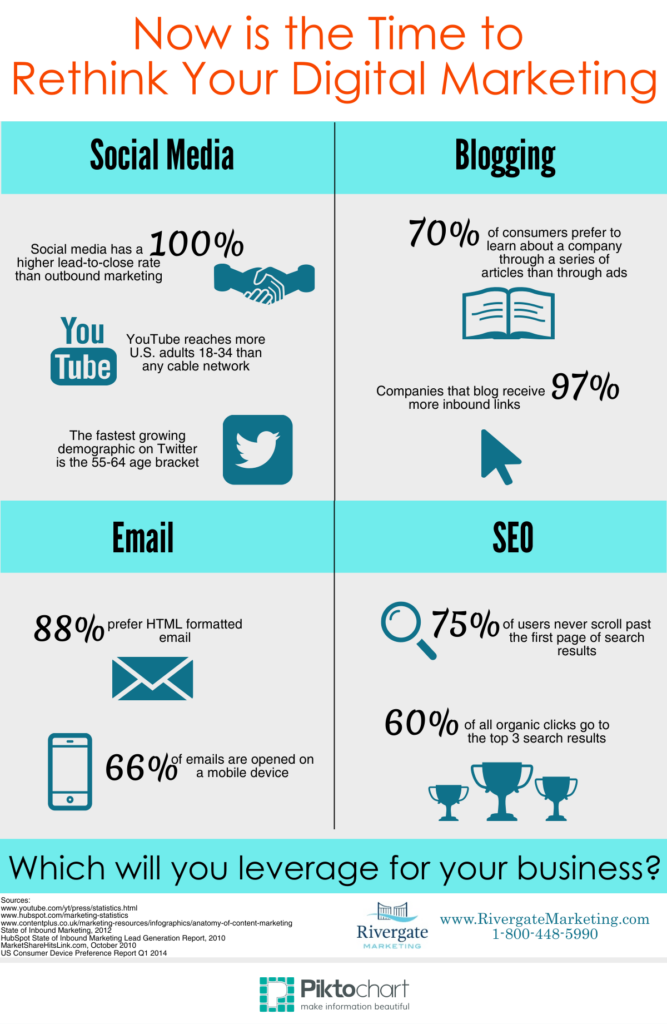
- It is better to condense the research into illustrations like pie and bar charts.
- Create embed code for your infographics for accessibility. Besides, embed code means automatic backlinks.
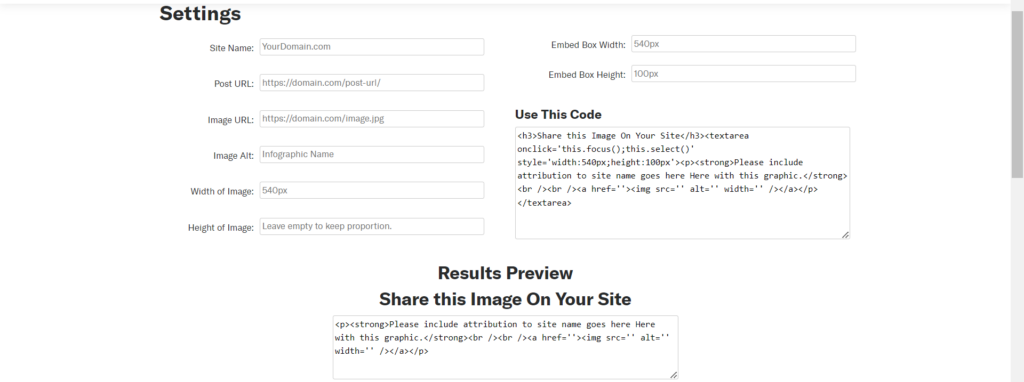
What you need to create infographics:
- Data collection and analysis tools — Google Sheet
- Graphic Design tools — Canva, Piktochart
Guest Post on Relevant Sites
Guest posting is one of the oldest ways to build high-quality links to your website. Unfortunately, there have been concerns about its effectiveness and Google’s backlash.
Here is the gist:
In Q1 2014, Ann Smarty’s MyBlogGuest was penalized by Google because it is a guest blog network.
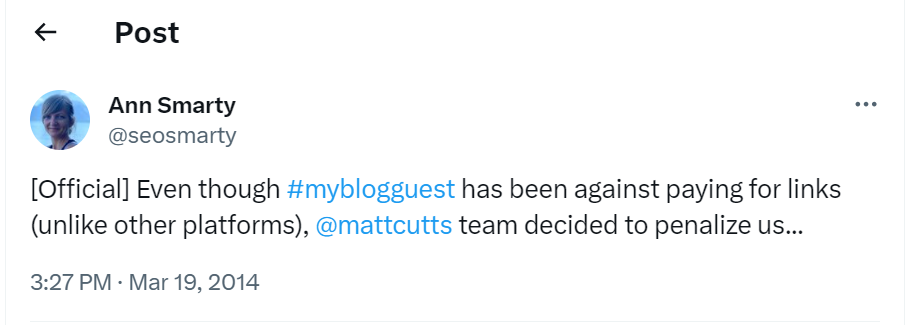
In Ann’s defense, she said it was a PR stunt in her comment to Search Engine Journal.

Despite all the seeming PR stunts and backlash, guest blogging/posting is still an effective link building tactic.
At 47%, it is one of the top 3 link-building techniques in 2022 — AIRA. And the trend will only continue in 2024.
But what about the concerns and backlash?
The way out: don’t guest post just for the sake of it. Do these instead:
- Be intentional with how and where you guest post.
- Focus on blogs with a similar target audience to your business.
- Guest post only on niche-relevant websites — for example, if you sell sportswear, write for similar blogs or sites around personal fitness and health & wellness.
- Guest posts on high-authority websites with at least a DA 30 score.
Pro tip:
Don’t send guest post pitches to sites with lower domain authority and organic traffic than yours.
What you need to get high-quality guest post links: create infographics:
- Vet the backlink profile of your target website — Ahrefs or Semrush
- Check the domain authority and spam score of your preferred site — Ahrefs or Semrush
Add Your Business/Product to “Best Of” Articles
This is one of my favorite backlink tactics in 2023. And fortunately, it is less widely used than guest posting.
In contrast, “best of” articles are a form of niche edit link building. So, the tactic will still work in 2024.
What is even “best of” articles?
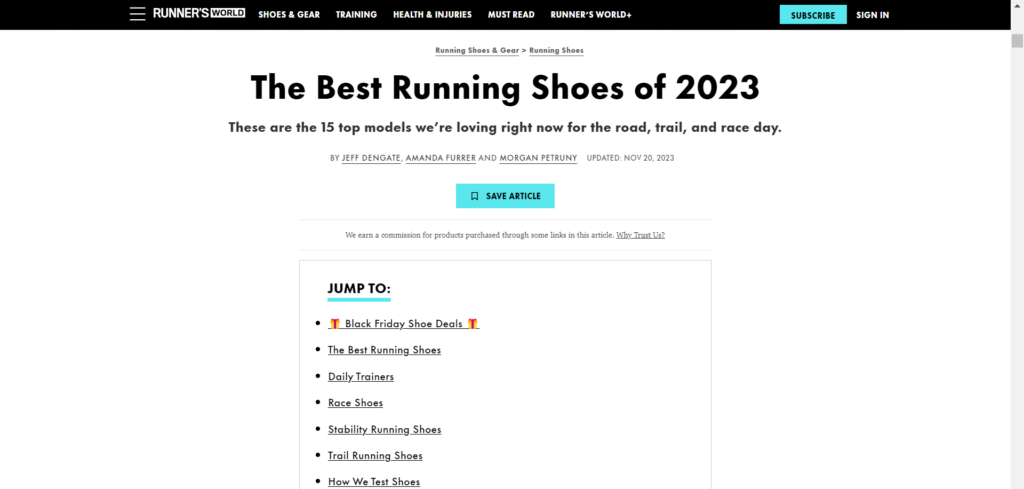
Whether “best of” articles or product roundups, they mean the same thing: a list of trusted products/services curated by influencers.
You’ll naturally get backlinks if your services/products feature on such roundups. But if you must pick only the most relevant pages. Otherwise, your link will not match the context and likely have zero link juice.
So, how can you find the RIGHT “best of” articles?
- Go to Ahrefs Content Explorer
- Type “best” “your target keyword” into the search bar
- Change the search setting from “Everywhere” to “In title.”
- Also, set the results to “Only live” pages
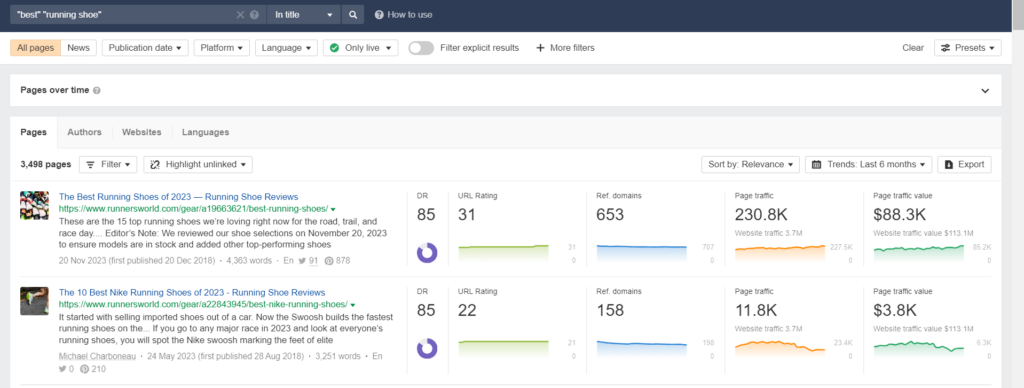
- Reach out to the authors of the post of the owners of the targets with a pitch to include your product in their roundup.
What you need to add your business to “best of” articles:
- Proof your product deserves a mention — case studies and client testimonials
- Research and outreach — Ahrefs and MailChimp
Add Your Website/Business to Directories
Directory links are often overlooked because of their seeming inferior quality. However, they are foundational backlinks that will still work in 2024.
Besides, enlisting your business/website on directories is often free. And say you’ll pay for paid listings; the quote is cheaper than similar tactics like “best of articles.”
Also, directory link building benefits go beyond building backlinks. It brings more visibility to your site. Imagine getting mentioned on Yelp — with a positive rating. Think about the traffic your site will receive.

Outside the global listings, like Yelp, get listed on national and local directories. Here is how to find them:
- Competitor analysis — use Ahrefs Intersect to find domains linking to competitors but not you. Look through the results for directories.
- Ask influencers in your niche.
- Ask customers
While at it, join Google’s directory: Google Business Profile (GBP). With it, your business can get into Google 3-Pack.
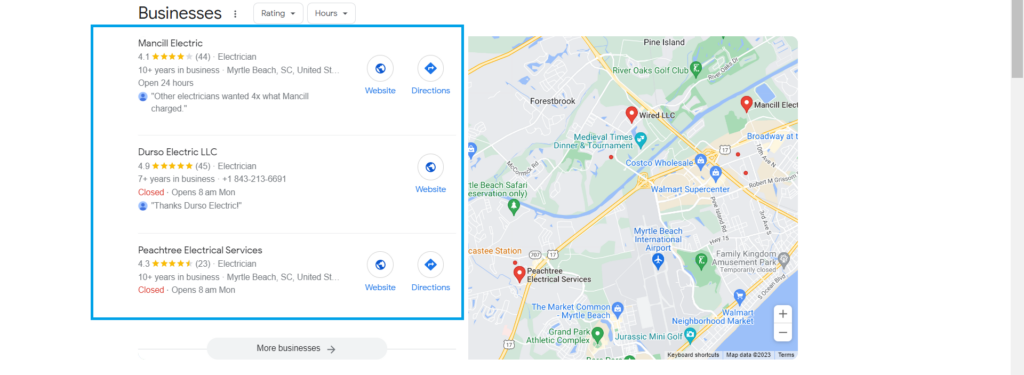
What you need to add your business to directories:
- Find high-quality directories — recommendations from trusted sources
- Competitors backlink analysis — Ahrefs or Semrush
Answer Queries on HARO
HARO link building has been one of the recent top methods to get high-quality editorial backlinks. And I’m sure it will still be in 2024. Here is why:
Take a close look at the recent algorithm updates targeted at content, like HCU (Helpful Content Update) and EEAT (Experience, Expertise, Authoritativeness, and Trustworthiness). You’ll see that they are geared towards ranking authoritative content by experts higher on SERPs.
So, how does HARO link building help?
- Help A Reporter Out (HARO) connects writers to experts.
- The expert will provide quotes and opinion pieces to writers’ queries.
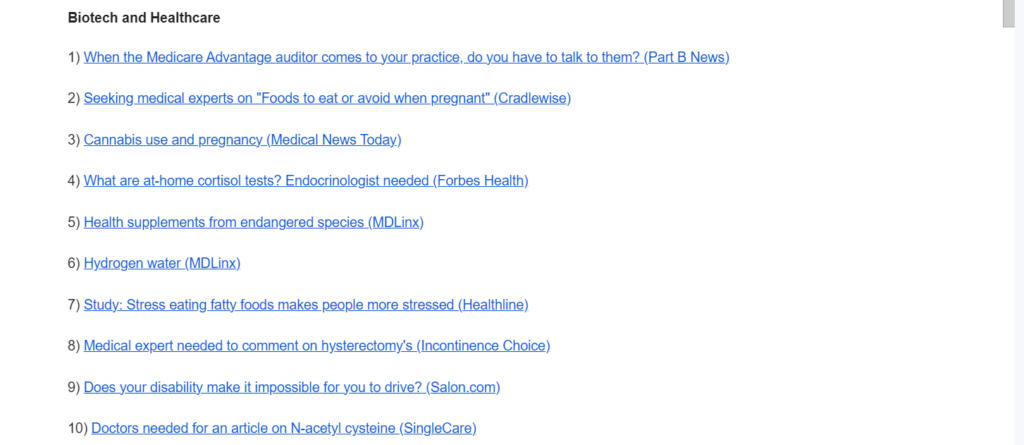
- In turn, the content will meet search guidelines and be helpful to readers.
- The expert, in turn, will get a backlink as the source of the quotes or statistics.
In short, everyone wins.
Unfortunately, the caveat is that HARO is somewhat competitive and can be energy-draining. First, your pitch might never get seen.
Also, you need a paid subscription to set keyword alerts.
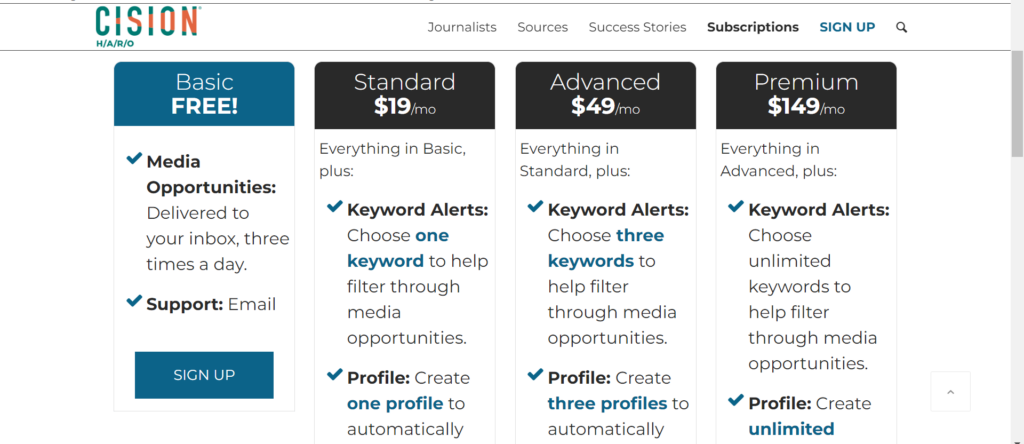
Even with that, there’s no telling when the article will go live or if the reporter will feature your quote.
What should you do?
Don’t be limited to HARO. Try similar services like Terkel and SourceBottle.
What you need to get HARO links:
- Get a paid HARO plan
- Set keyword alerts and send your best pitch early
Broken Link Building
In my decade+ of building links, broken link building is unarguably the most selfless tactic. It focuses on creating value for target websites. And because of that, this tactic will remain relevant in 2024 — and beyond.
But won’t there be a shortage of broken/damaged links in 2024 if every SEO favors this tactic?
No!
There has never been a shortage of broken/damaged links because of factors like site migration, dead pages, and technical errors. And I see the trend continuing for a while.
So, explore the loophole.
How can you find broken links, then?
Check my extensive guide on broken link building for tips.
What you need to do broken link building:
- Explore competitors broken links — Ahrefs
- Build replacement pages
- Target the linking pages
Build a Following in Online Communities
This digital marketing tactic builds topical authority via micro-blogging on social media and forums. Influencers do this on platforms like LinkedIn, Quora, Medium, and Facebook. And it works.
Take this guy, Kuba, for example. He only joined LinkedIn and started building his following in 2023. Now, he has over 7K followers.
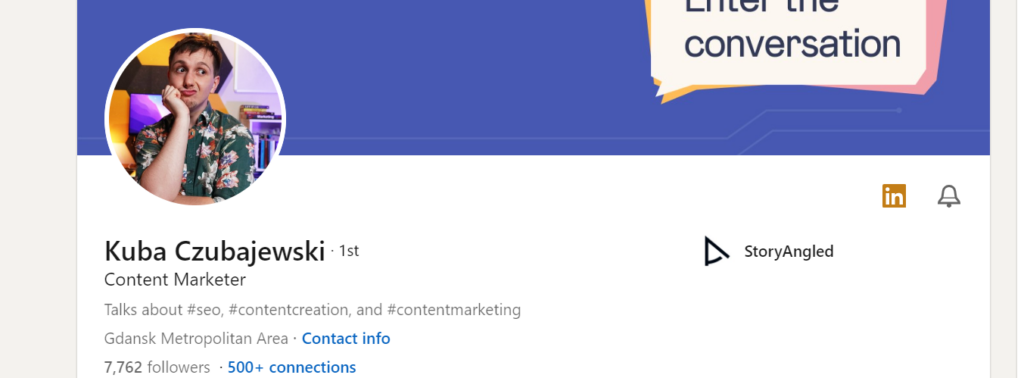
More importantly, Kuba increased his business from a few thousand to 100K earnings.
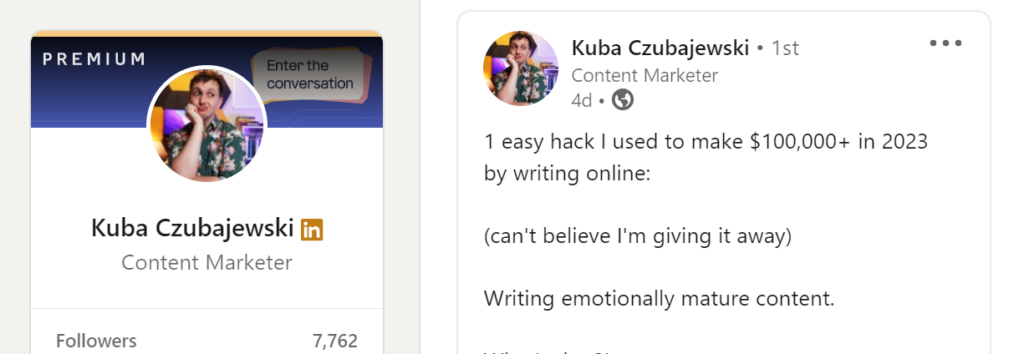
But isn’t following on social media a vanity project?
No!
Social media and branding are an added advantage to building links. Here is how:
By providing value through your niches and comments, you’ll secure partnerships with leaders in your niche. That partnership will lead to links, leads, and sales.
If you want targeted reach, focus on niche groups. But a general approach like Kuba’s will be good.
Note:
This tactic works best when added to other link building techniques.
What you need to build your online following:
- Personalized content strategy
- Keyword research
- Partnership with other creators in your niche
Join Podcasts

Podcasts are the rave among creators in 2023. And I see many more people joining the trend in 2024. It’ll be worth taking a look into for your link building.
But how does a podcast, an audio event, help link building? Why should you even bother?
Let’s start with the second question.
Featuring on a podcast as a guest contributor will build your authority for Google’s EEAT. More importantly, it will expose you to further partnerships and likely sales.
About link building:
Podcasts come with newsletters, emails, and even summary content in a blog form. These media will include a backlink to your site.
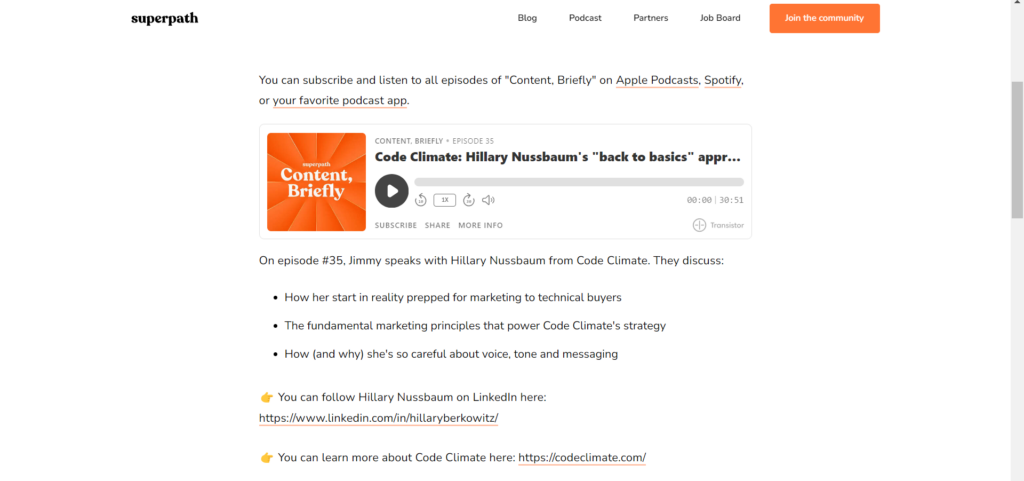
Here’s the best part: other sites and reporters will likely quote what you said on the podcast. That will be an additional way to generate links — without outreach.
Ultimately, you’ll get a 3-in-1 deal: build your brand authority, get sales, and improve your backlink profile.
What you need for podcast link building:
- Seek out podcasts accepting guest contributions
- Pitch and get invited for a backlink
Explore Unlinked Mentions
Targeting unlinked brand mentions is an evergreen link building tactic. I’m confident it’ll continue to be effective in 2024 and beyond.
But this time, restrategize when and where to use this tactic. How?
Look at these 4 cases to explore the RIGHT unlinked mentions:
- Was the site linked to you at some point but doesn’t anymore?
- Is the content still live but with your brand name out?
- Is the page dead?
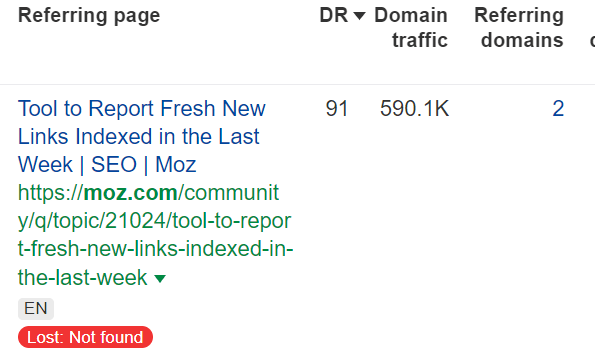
- Is the mention entirely new and not linking to you?
For cases 1 and 2: save time sending outreach messages. The chances are that the page now links to a competitor.
For case 3, check if the dead page was redirected. If yes, reach out and subtly remind the author of your backlink. While at it, offer new reasons for addition.
For case 4, this results from your several link building tactics but with no backlinks.
Which of these cases need your focus in 2024?
Case 4.
What you need for unlinked mentions:
- Find unlinked mentions — BrandMentions
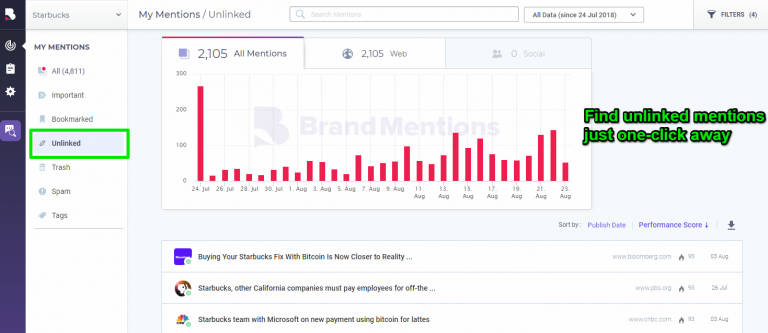
- Send an outreach message
Cost Considerations and Budgeting
Cost and budgeting are any plan’s final and arguably most critical components. Your link building plan should be the same.
So, how should you go about it?
To get an accurate cost estimation. Create a separate budget for each of these:
- Content creation
- SEO tools
- Link costs
Content Creation
Quality content requires expertise. And it can’t be a one-off thing. Be consistent. Otherwise, you’ll lose your audience.
For example, say you publish a blog post and video content per week. Your audience would already grow used to this. Failure to deliver in weeks will likely send them to your competitors.
So, create the content. But here is the problem:
You will likely need help to balance running your business with content creation and marketing. Hence, there is a need for content creators/writers. And the top ones are costly.
How much does it cost to hire content creators?
- For writers, expect up to $2K per month — and this is the least if you want top-tier content.
SEO Tools
There was some uproar about Ahrefs pricing in the last quarter of 2023. But even the closest competitor, Semrush, is just as pricey.
Regardless, these tools are critical for link prospecting and vetting. Otherwise, the quality of your backlinks will be off.
What is the price of SEO tools?
- Ahrefs costs $199 monthly

- Semrush costs $129.95 monthly
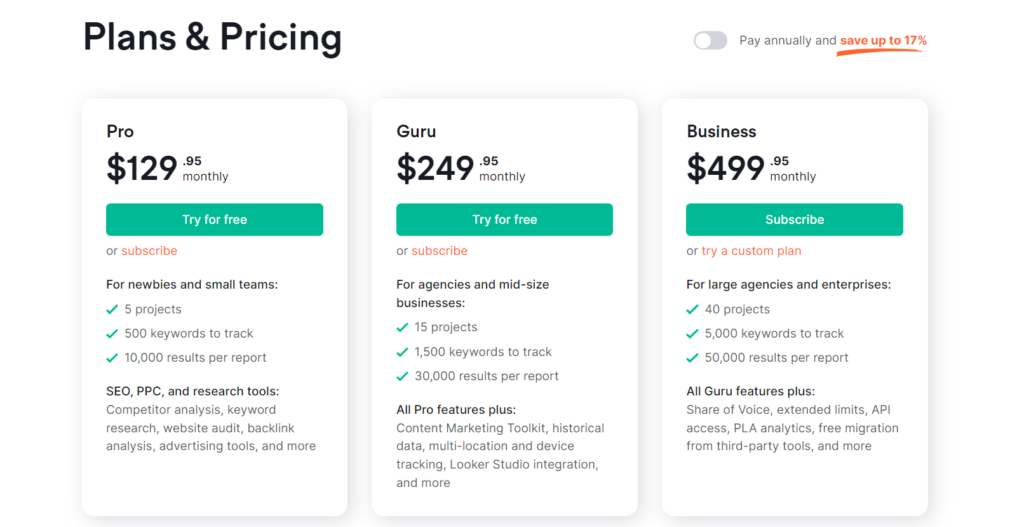
I’ll only recommend the standard plans. Otherwise, you’ll have limited options to explore and research your link opportunities.
Link Costs
Quality links are not free. And even when the cost is not monetary, you’ll spend time and energy.
How much do links cost?
Read this article on link building pricing.
Note: you’ll also factor in the costs of your link building team and other vital tools. Overall, expect a monthly running cost of up to $7-10K. And that is the least for quality link building.
A 6-Month Link Building Plan Template
Here’s a quick overview:
- Month 1: audit and set goals
- Month 2: create a content strategy
- Month 3: kickstart your campaign
- Month 4: partner with other websites
- Month 5: find unlinked mentions
- Month 6: evaluation
Audit and Set Goals
Let’s start with the audit part.
The first month should cover auditing your website first and then competitors. For the former, take a deeper look at your pages and answer the following questions:
- What is the current state of my website?
Perform a thorough website audit to reveal issues with responsive web design and coherent branding.
- Is my existing content relevant, high-quality, and link-worthy?
Perform content auditing to show how to maximize the link building opportunities available.
Next, check your competitors.
- Engage your prospector and vetter to study the patterns of how your competitors get backlinks.
- What strategies are competitors using that you can target?
- Are there loopholes in their content strategies that you can explore?
- What are their top sources? Can you also get backlinks from these sources?
Now to the second part: set goals.
Steer clear of generic goals of being the best in your niche. Such aims will be costly and directionless.
Instead, set S-M-A-R-T (Specific, Achievable, Relevant, Timely) goals to boost brand awareness and sales. Here are a few examples of such goals:
- Increase website traffic by 30%
- Increase conversion by 10%
- Acquire more contextual backlinks from DA30+ websites
- Improve your search rankings from “top 100” to “top 20” positions
Success:
After auditing and setting goals, you should know the type, quality, and quantity of links you need to match (and outrank) your competition.
Create a Content Strategy
The best content starts with your audience. Otherwise, your content strategy will fail even before content creation starts.
What can you do?
- So, ask questions of your users. What do they want? What are their fears?
You can create surveys to that end. But your marketing and customer care team should be more than capable of providing some questions.
- Afterward, conduct keyword research.
While at it, create a list of lucrative, niche-relevant search terms. Then, weave topics around them. Align them with the questions compiled by your marketing/customer care team.
- Create a content calendar.
Spread your topics around the 6-month timeline. Ensure to consider interlinking opportunities. Communicate the deadlines with your writers and editors.
Kickstart Your Campaign
Enough planning and goal setting. Set your link building campaign in motion. How?
- Start creating your content assets.
Start a blog and fill it with link-worthy articles. Beyond written content, explore videos and infographics. Lastly, repurpose your content into videos and share it with followers.
- Add your website to directories.
Before you do so, ensure that your branding tone and messaging are the same across your social pages and website. Done?
Go after social and directory links.
- Build your social presence
Sing your songs. Share your published posts and videos on social media to boost your presence. Also, you can repurpose your blogs into shareable snippets to increase user engagement.
Partner With Other Websites
Now, you have assets on your websites. Look towards building some on other websites. However, ensure you only partner (seek links) with relevant businesses and websites.
Here are some of the strategies to consider for the 4th month:
- Guest posting — create high-quality content assets on other websites following their guidelines
- Answer questions on HARO — offer data-rich and unique solutions to reporters’ queries to earn links to your homepage.
- Feature your products on “best of” articles, resource pages, and roundups
- Join podcasts and webinars to teach other businesses or individuals
- Help others to fix their broken links by creating top-notch replacement pages
Summarily, focus on offering valuable content first. That’s how to build links and relationships with site owners. Then, the links will naturally follow.
Find Unlinked Mentions
By the 5th month, your link building efforts will already show some results. In all of that success, there is still room for more. Double your efforts and win more links.
More importantly, find unlinked brand mentions. You’ve earned them. Now, get the links that ought to follow.
Evaluation
Evaluation shouldn’t wait till the end of the 6th month. You can spread it out.
In fact, it is best to monitor and crosscheck the success of your monthly activities. This way, you know what works, needs improvements, must be removed. Waiting for the 6th month for evaluation will be time-wasting.
That said, what exactly should you evaluate in the 6th month?
Short answer: the success of your goals. Have you achieved them? To what degree?
Pro tip:
If your link building plan works, make a model for future plans or clients’ projects. You can even turn that into a case study to earn more backlinks.
A Successful Link Building Plan Isn’t the End
Even when your link building plan is successful, you can’t stop. Build on the momentum. Build more links. Secure your place in the top-ranking positions in your niche.

